Evergreen Shrubs : The 20 Best Varieties for Year-Round Garden Appeal
Discover the 20 best evergreen shrubs for year-round garden appeal. Learn about top varieties, planting tips and how to care for these hardy, low-maintenance plants.
Evergreen shrubs are the backbone of any garden, providing year-round structure, color and interest. These versatile plants offer a constant backdrop of greenery, even when deciduous plants have shed their leaves. In this comprehensive guide, we’ll explore the 20 best evergreen shrubs to enhance your garden’s appeal throughout the seasons.
Why Choose Evergreen Shrubs?
Before diving into our top 20 list, let’s consider the benefits of evergreen shrubs:
- Year-round foliage
- Low maintenance
- Privacy screening
- Wind protection
- Erosion control
- Habitat for wildlife
The 20 Best Evergreen Shrubs
1. Boxwood (Buxus)
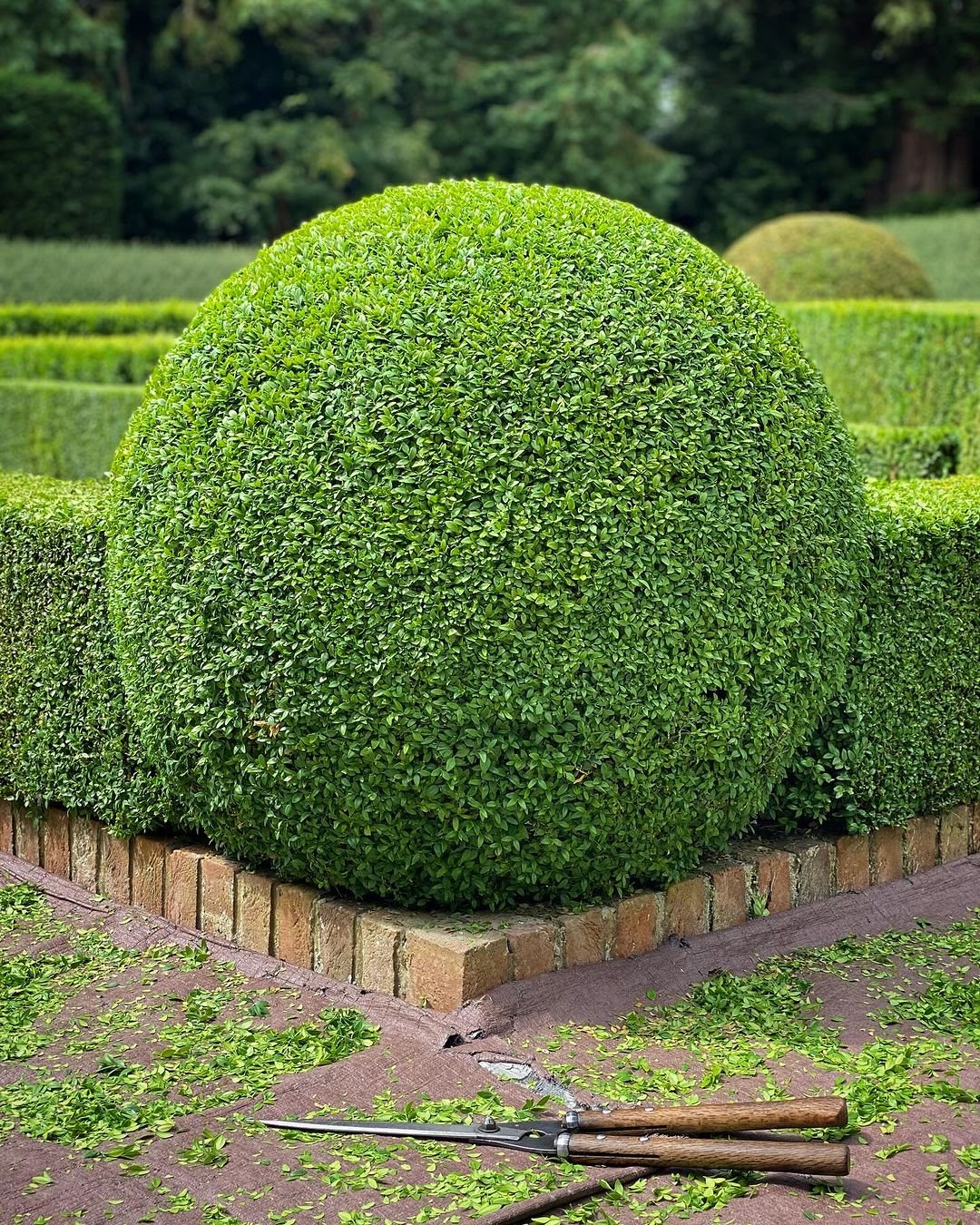
Here is a chart with detailed information on Boxwood (Buxus):
| Category | Information |
|---|---|
| Botanical Name | Buxus sempervirens (Common Boxwood) |
| Common Name | Boxwood |
| Plant Type | Evergreen Shrub |
| Hardiness Zone | 5-9 |
| Sun Exposure | Full Sun to Partial Shade |
| Soil Type | Well-drained, Loamy, Moist Soil |
| Watering | Moderate, Consistent Moisture |
| Growth Habit | Dense, Rounded, Slow-Growing |
| Height/Spread | 2-20 feet tall / 2-8 feet wide (depending on variety) |
| Foliage | Small, Glossy, Dark Green Leaves |
| Special Features | Evergreen, Deer Resistant, Drought Tolerant Once Established, Low Maintenance, Ideal for Hedges, Topiary, and Formal Gardens |
- Ideal for formal gardens and hedges
- Pruning tips for boxwood
- Varieties: ‘Green Velvet’, ‘Winter Gem’
2. Holly (Ilex)

Here is a chart with detailed information on Holly (Ilex):
| Category | Information |
|---|---|
| Botanical Name | Ilex aquifolium (English Holly), Ilex opaca (American Holly), Ilex crenata (Japanese Holly), among others |
| Common Name | Holly |
| Plant Type | Evergreen or Deciduous Shrub/Tree |
| Hardiness Zone | 5-9 (Varies by Species) |
| Sun Exposure | Full Sun to Partial Shade |
| Soil Type | Well-drained, Slightly Acidic Soil |
| Watering | Moderate, Prefers Consistent Moisture |
| Growth Habit | Upright, Dense, Can Be Shrubby or Tree-like |
| Height/Spread | 6-50 feet tall / 5-25 feet wide (Varies by Species) |
| Foliage | Glossy, Dark Green Leaves, Often Spiny (Evergreen Species) |
| Fruit | Bright Red, Orange or Yellow Berries (on Female Plants) |
| Special Features | Evergreen Foliage, Winter Interest, Attracts Birds, Deer Resistant, Used for Hedges, Screening, and Ornamental Planting |
- Known for glossy leaves and red berries
- Excellent for holiday decorations
- Varieties: ‘Blue Princess’, ‘Castle Spire’
3. Rhododendron

Here is a chart with detailed information on Rhododendrons:
| Category | Information |
|---|---|
| Botanical Name | Rhododendron spp. |
| Common Name | Rhododendron |
| Plant Type | Evergreen or Deciduous Shrub |
| Hardiness Zone | 4-9 (Varies by Species) |
| Sun Exposure | Partial Shade to Full Sun (Depends on Species) |
| Soil Type | Well-drained, Acidic, Rich in Organic Matter |
| Watering | Regular, Prefers Consistently Moist Soil |
| Growth Habit | Dense, Rounded, Upright, or Spreading |
| Height/Spread | 2-20 feet tall / 2-8 feet wide (Varies by Species) |
| Flowering Time | Spring (Some Species Bloom in Early Summer) |
| Flower Description | Large, Showy Clusters of Bell-shaped, Funnel-shaped, or Tubular Flowers in a Variety of Colors, including Pink, Red, Purple, White and Yellow |
| Foliage | Glossy, Dark Green Leaves (Evergreen Species) or Green Leaves (Deciduous Species) |
| Special Features | Attracts Pollinators (Bees, Butterflies), Evergreen Varieties Offer Year-round Interest, Showy Flowers, Used in Shrub Borders, Woodland Gardens and as Specimen Plants |
- Spectacular spring flowers
- Prefers acidic soil
- Varieties: ‘PJM’, ‘Roseum Elegans’
4. Mountain Laurel (Kalmia latifolia)
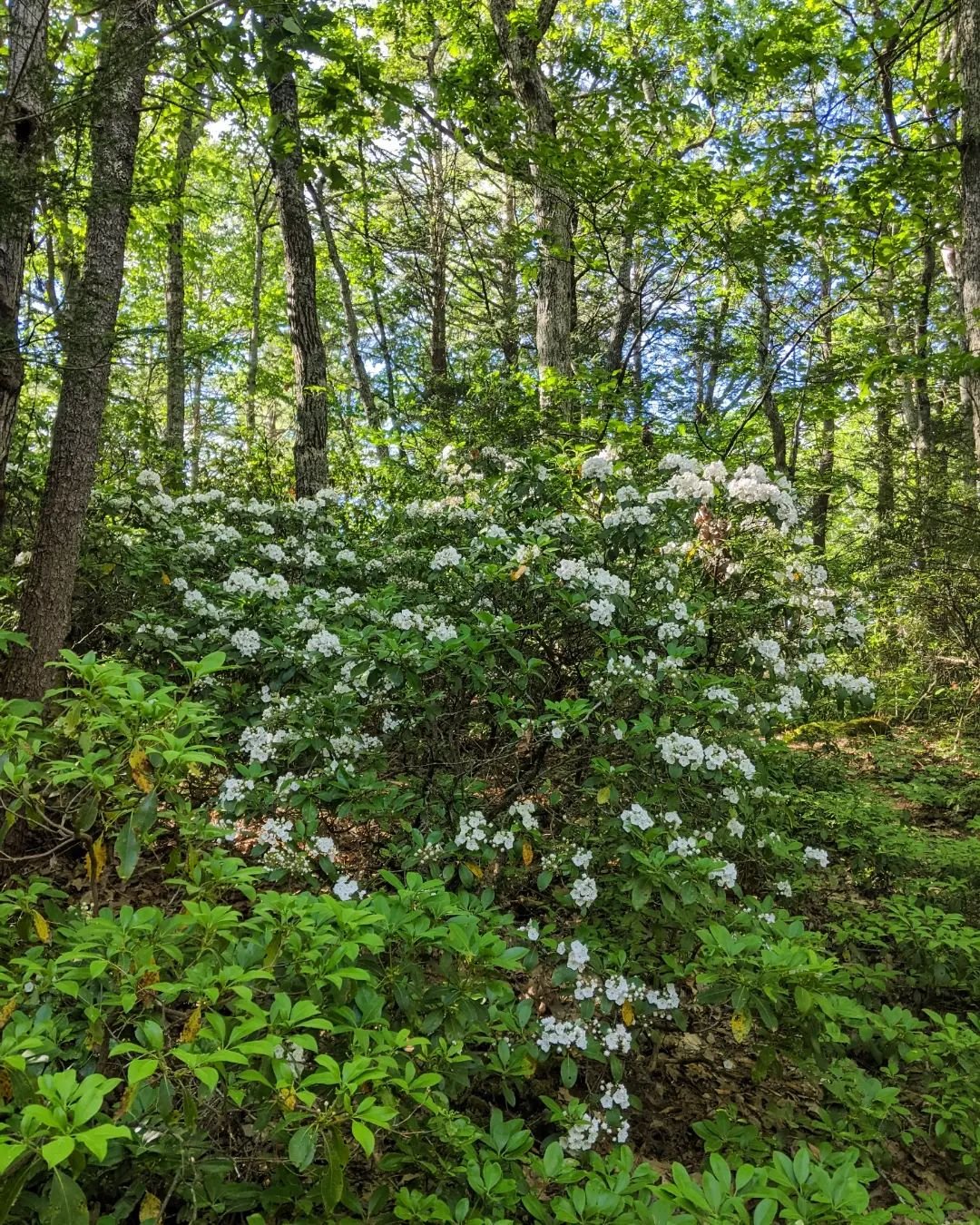
Here is a chart with detailed information on Mountain Laurel (Kalmia latifolia):
| Category | Information |
|---|---|
| Botanical Name | Kalmia latifolia |
| Common Name | Mountain Laurel |
| Plant Type | Evergreen Shrub |
| Hardiness Zone | 4-9 |
| Sun Exposure | Partial Shade to Full Sun |
| Soil Type | Well-drained, Acidic, Moist Soil |
| Watering | Regular, Keep Soil Consistently Moist |
| Growth Habit | Rounded, Dense, Spreading |
| Height/Spread | 5-15 feet tall / 5-15 feet wide |
| Flowering Time | Late Spring to Early Summer |
| Flower Description | Cup-shaped, Clusters of Pink, White, or Red Flowers with Intricate Markings |
| Foliage | Glossy, Dark Green, Lance-shaped Leaves |
| Special Features | Evergreen Foliage, Showy Flowers, Deer Resistant, Attracts Pollinators (Bees), Ideal for Woodland Gardens and Naturalized Areas |
- Native to eastern North America
- Beautiful cup-shaped flowers
- Varieties: ‘Sarah’, ‘Olympic Fire’
5. Pieris
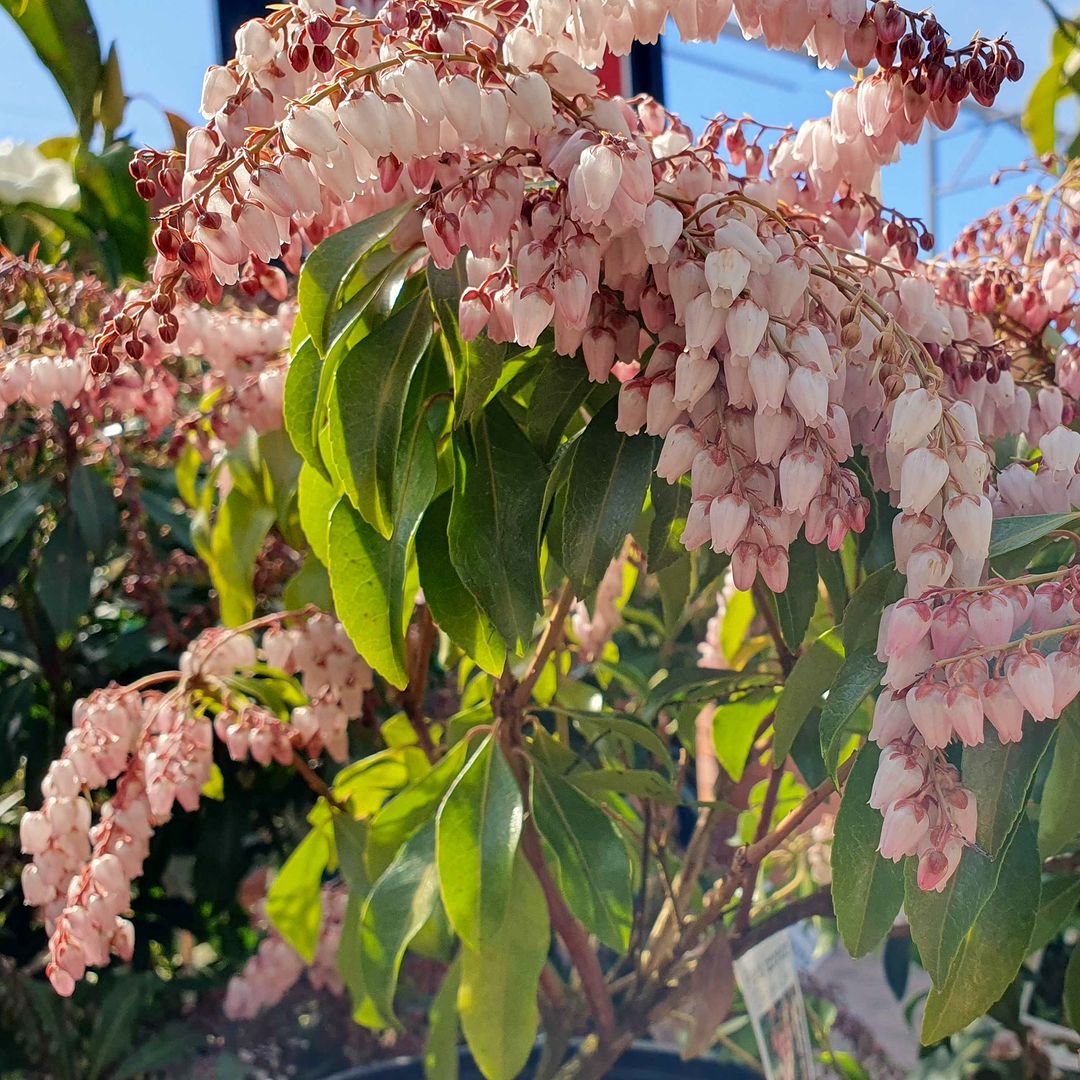
ere is a chart with detailed information on Pieris:
| Category | Information |
|---|---|
| Botanical Name | Pieris japonica |
| Common Name | Japanese Pieris, Andromeda |
| Plant Type | Evergreen Shrub |
| Hardiness Zone | 5-8 |
| Sun Exposure | Partial Shade to Full Sun |
| Soil Type | Well-drained, Acidic, Moist Soil |
| Watering | Regular, Keep Soil Consistently Moist |
| Growth Habit | Rounded, Compact, Dense |
| Height/Spread | 4-12 feet tall / 3-8 feet wide |
| Flowering Time | Early Spring |
| Flower Description | Drooping Clusters (Racemes) of Small, Bell-shaped, White or Pink Flowers |
| Foliage | Glossy, Dark Green Leaves, New Growth Often Bronze or Red |
| Special Features | Evergreen Foliage, Early Spring Blooms, Deer Resistant, Attracts Pollinators, Low Maintenance, Ideal for Woodland Gardens and Shrub Borders |
- Also known as Andromeda
- Drooping clusters of bell-shaped flowers
- Varieties: ‘Mountain Fire’, ‘Flaming Silver’
6. Juniper (Juniperus)
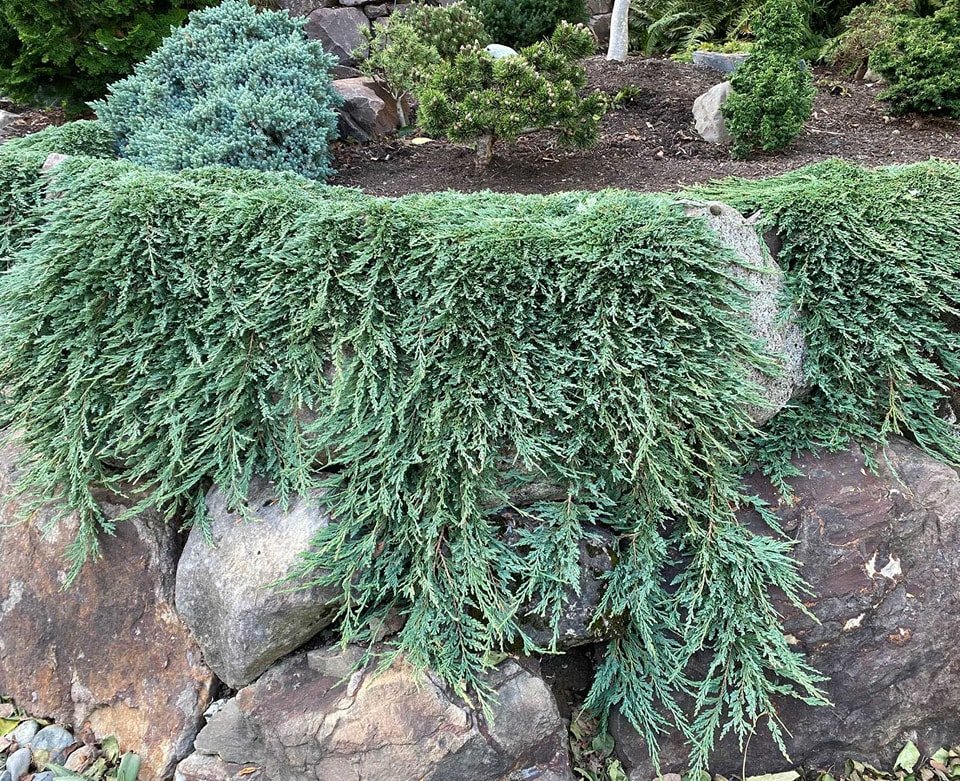
Here is a chart with detailed information on Juniper (Juniperus):
| Category | Information |
|---|---|
| Botanical Name | Juniperus spp. |
| Common Name | Juniper |
| Plant Type | Evergreen Shrub or Tree |
| Hardiness Zone | 2-9 (Varies by Species) |
| Sun Exposure | Full Sun |
| Soil Type | Well-drained Soil, Tolerates Sandy and Rocky Soils |
| Watering | Low to Moderate, Drought Tolerant Once Established |
| Growth Habit | Upright, Spreading, Groundcover, or Columnar |
| Height/Spread | 6 inches to 50 feet tall / 1-20 feet wide (Varies by Species) |
| Foliage | Needle-like or Scale-like, Green to Blue-green, Some with Yellow or Variegated Forms |
| Fruit | Small, Berry-like Cones, Typically Blue or Black |
| Special Features | Evergreen Foliage, Drought Tolerant, Deer Resistant, Erosion Control, Used for Hedges, Groundcovers, and Windbreaks |
- Versatile, from ground covers to tall trees
- Drought-tolerant
- Varieties: ‘Blue Star’, ‘Gold Coast’
7. Yew (Taxus)
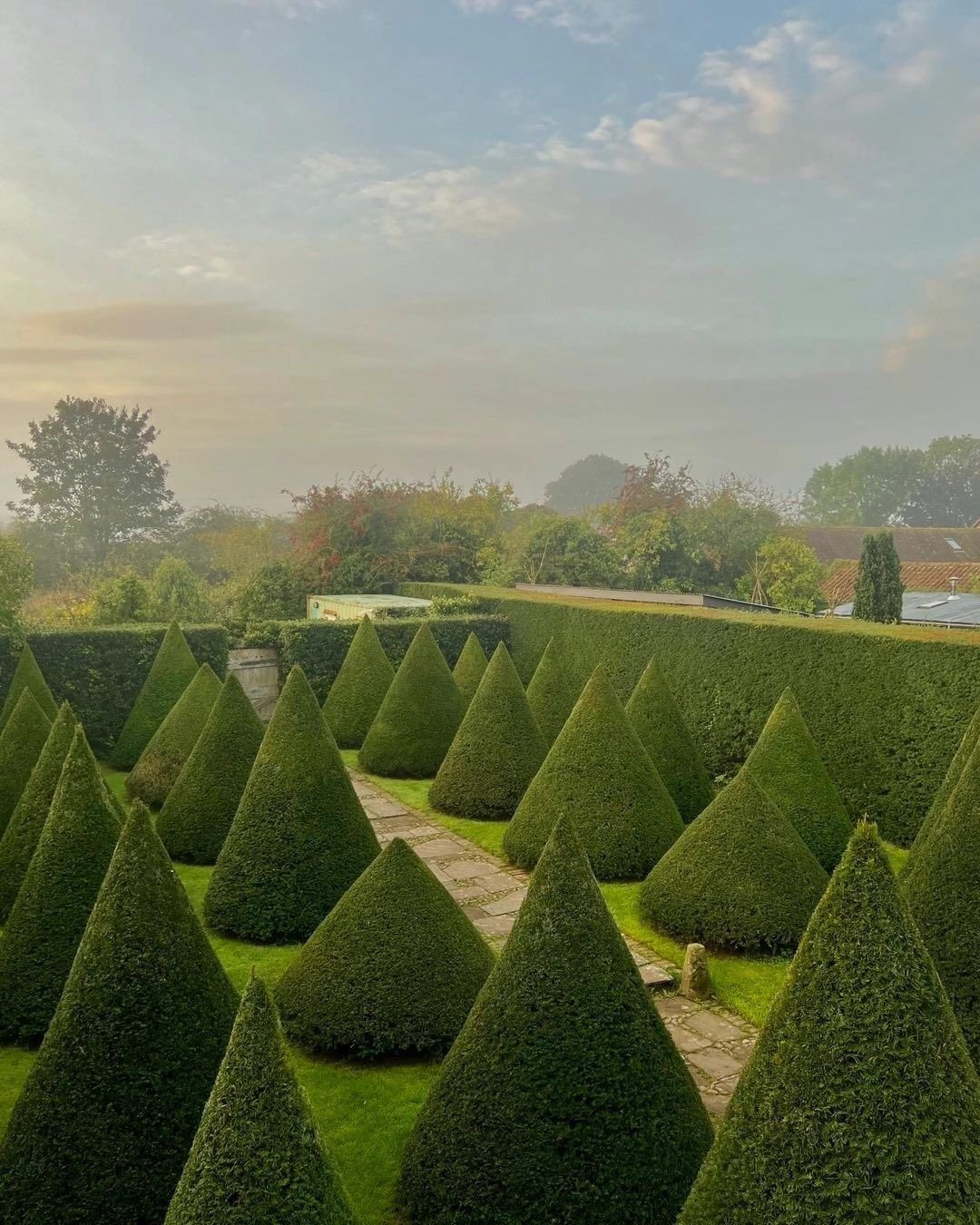
Here is a chart with detailed information on Yew (Taxus):
| Category | Information |
|---|---|
| Botanical Name | Taxus spp. |
| Common Name | Yew |
| Plant Type | Evergreen Shrub or Tree |
| Hardiness Zone | 4-7 (Varies by Species) |
| Sun Exposure | Full Sun to Partial Shade |
| Soil Type | Well-drained, Moist, Slightly Acidic to Neutral Soil |
| Watering | Moderate, Drought Tolerant Once Established |
| Growth Habit | Upright, Spreading, or Columnar |
| Height/Spread | 2-60 feet tall / 4-20 feet wide (Varies by Species) |
| Foliage | Needle-like, Dark Green Leaves |
| Fruit | Red, Berry-like Arils (Only on Female Plants) |
| Special Features | Evergreen Foliage, Deer Resistant, Shade Tolerant, Used for Hedges, Topiary, Foundation Plantings, and Specimen Trees |
- Classic hedge plant
- Tolerates heavy pruning
- Varieties: ‘Densiformis’, ‘Hicksii’
8. Arborvitae (Thuja)
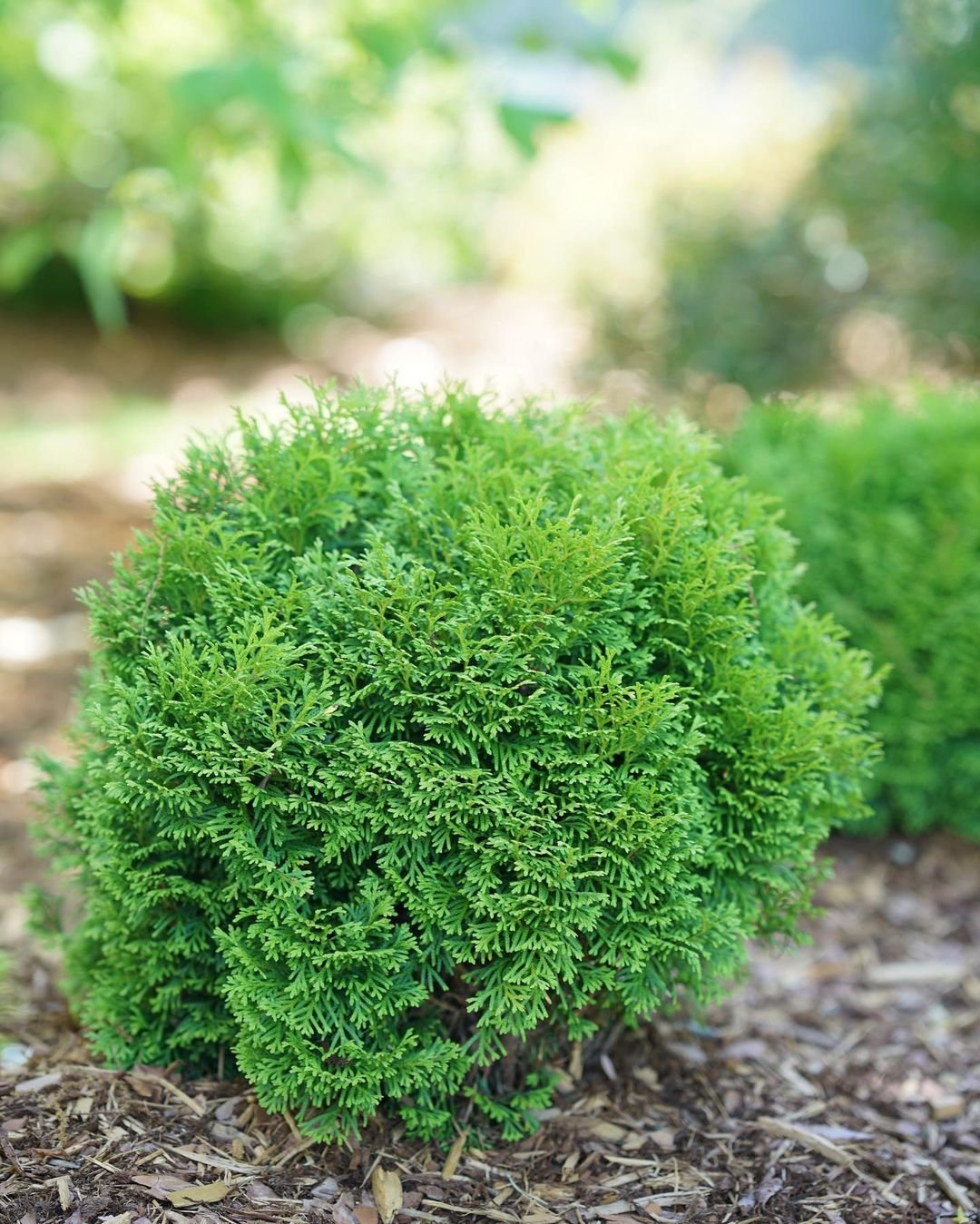
Here is a chart with detailed information on Arborvitae (Thuja):
| Category | Information |
|---|---|
| Botanical Name | Thuja spp. |
| Common Name | Arborvitae, Thuja |
| Plant Type | Evergreen Tree or Shrub |
| Hardiness Zone | 2-8 (Varies by Species) |
| Sun Exposure | Full Sun to Partial Shade |
| Soil Type | Well-drained, Loamy, Moist Soil |
| Watering | Moderate, Requires Regular Watering Especially When Young |
| Growth Habit | Pyramidal, Upright, Dense |
| Height/Spread | 3-70 feet tall / 1-25 feet wide (Varies by Species) |
| Foliage | Scale-like, Soft, Green to Yellow-green, Some Varieties Have Golden or Variegated Foliage |
| Special Features | Evergreen Foliage, Fast-growing, Deer Resistant, Windbreaks, Privacy Screens, Low Maintenance, Used for Hedges and Foundation Plantings |
- Popular for privacy screens
- Fast-growing
- Varieties: ‘Green Giant’, ‘Emerald Green’
9. Euonymus
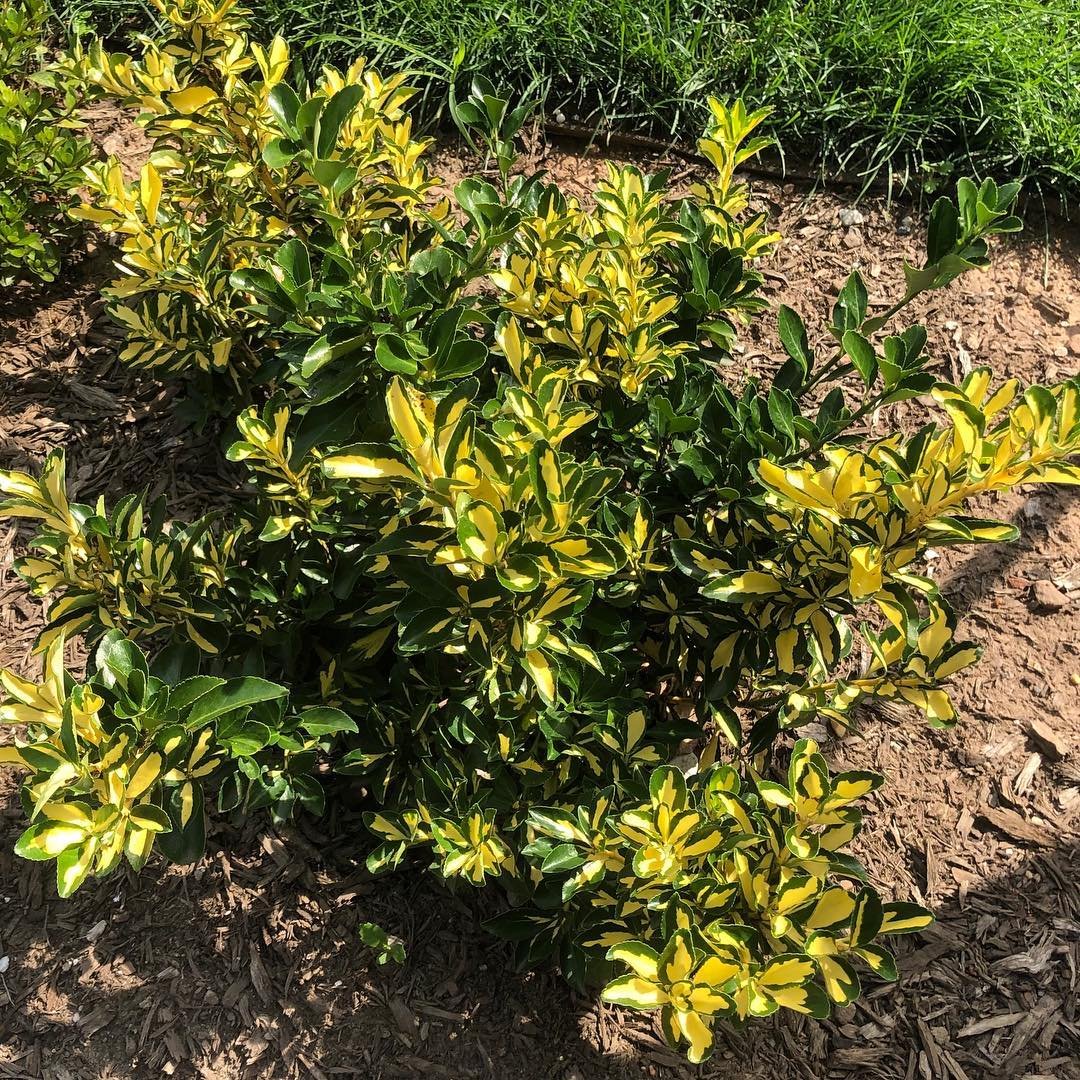
Here is a chart with detailed information on Euonymus:
| Category | Information |
|---|---|
| Botanical Name | Euonymus spp. |
| Common Name | Euonymus, Spindle, Burning Bush |
| Plant Type | Evergreen or Deciduous Shrub, Vine, or Small Tree |
| Hardiness Zone | 4-9 (Varies by Species) |
| Sun Exposure | Full Sun to Partial Shade |
| Soil Type | Well-drained Soil, Tolerates a Variety of Soil Types |
| Watering | Moderate, Drought Tolerant Once Established |
| Growth Habit | Upright, Spreading, Climbing, or Groundcover |
| Height/Spread | 1-20 feet tall / 1-15 feet wide (Varies by Species) |
| Foliage | Glossy, Green or Variegated Leaves, Some with Brilliant Fall Color |
| Special Features | Versatile, Tolerates Poor Soil, Variegated Foliage, Fall Color, Used for Hedges, Groundcovers and Accent Plants |
- Variegated varieties add color
- Good for foundation plantings
- Varieties: ‘Emerald Gaiety’, ‘Gold Splash’
10. Camellia
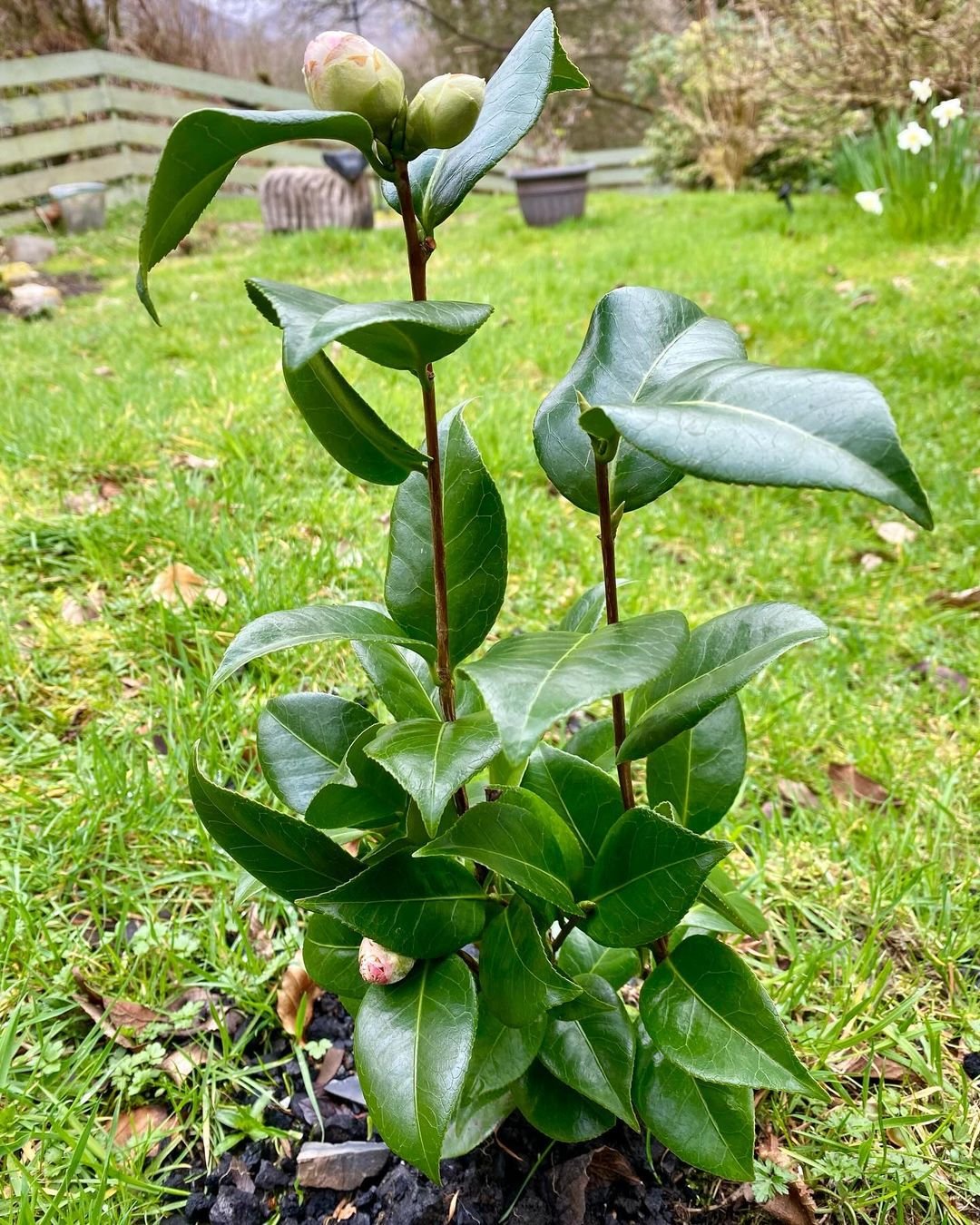
Here is a chart with detailed information on Camellia:
| Category | Information |
|---|---|
| Botanical Name | Camellia spp. |
| Common Name | Camellia |
| Plant Type | Evergreen Shrub or Small Tree |
| Hardiness Zone | 7-9 (Varies by Species) |
| Sun Exposure | Partial Shade to Full Sun |
| Soil Type | Well-drained, Acidic, Moist Soil |
| Watering | Regular, Prefers Consistently Moist Soil |
| Growth Habit | Upright, Dense, Bushy |
| Height/Spread | 3-20 feet tall / 3-15 feet wide (Varies by Species) |
| Flowering Time | Fall to Spring (Depending on Variety) |
| Flower Description | Large, Showy, Camellia-like Flowers in White, Pink, Red, or Variegated Colors |
| Foliage | Glossy, Dark Green Leaves |
| Special Features | Evergreen Foliage, Showy Flowers, Low Maintenance, Ideal for Shade Gardens, Used for Borders and Foundation Plantings |
- Stunning flowers in late winter or early spring
- Prefers partial shade
- Varieties: ‘Pink Perfection’, ‘Yuletide’
11. Azalea
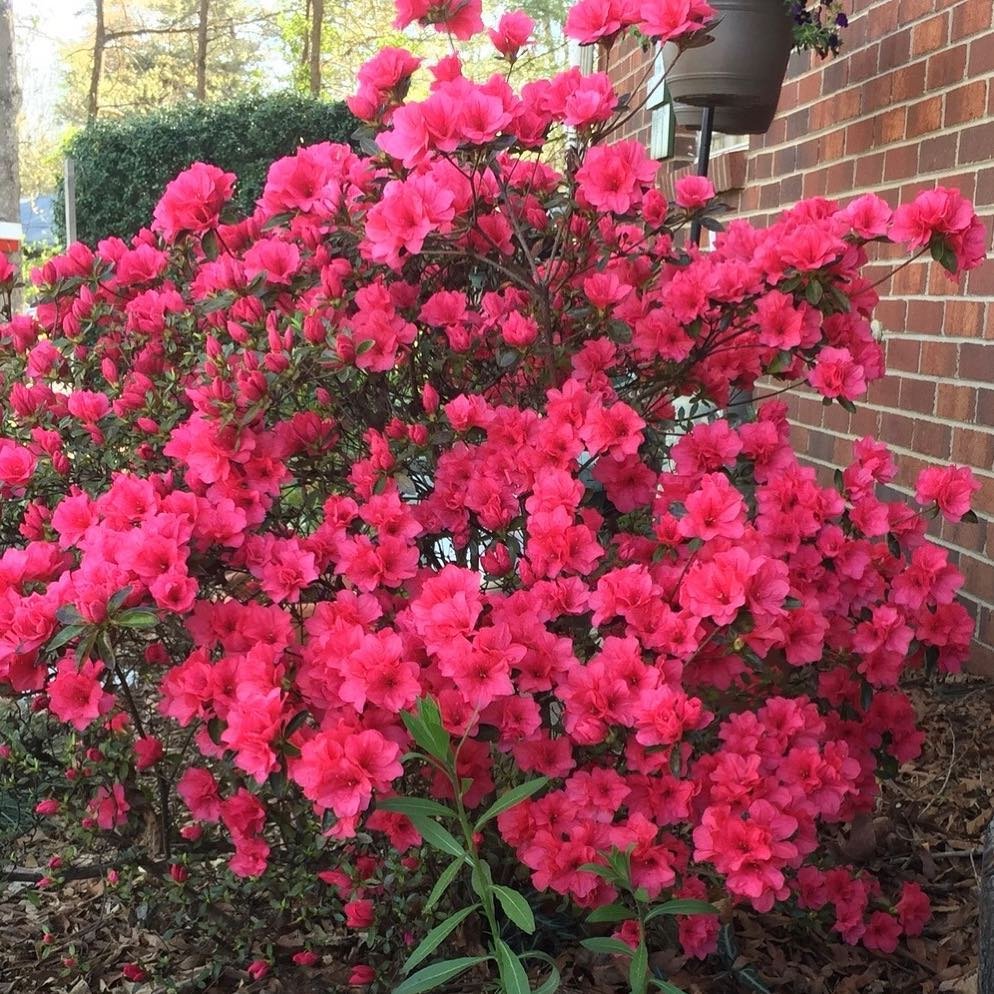
Here is a chart with detailed information on Azalea:
| Category | Information |
|---|---|
| Botanical Name | Rhododendron spp. (formerly Azalea) |
| Common Name | Azalea |
| Plant Type | Deciduous or Evergreen Shrub |
| Hardiness Zone | 4-9 (Varies by Species) |
| Sun Exposure | Partial Shade to Full Sun |
| Soil Type | Well-drained, Acidic, Moist Soil |
| Watering | Regular, Keep Soil Consistently Moist |
| Growth Habit | Rounded, Dense, Spreading |
| Height/Spread | 2-15 feet tall / 2-15 feet wide (Varies by Species) |
| Flowering Time | Spring (Some Varieties Bloom in Fall) |
| Flower Description | Funnel-shaped, Clusters of Flowers in Various Colors including Pink, Red, White, and Purple |
| Foliage | Glossy to Matte, Green or Variegated Leaves |
| Special Features | Showy Flowers, Deer Resistant, Low Maintenance, Ideal for Borders, Foundation Plantings, and Woodland Gardens |
- Many evergreen varieties available
- Vibrant spring blooms
- Varieties: ‘Gumpo White’, ‘Hino Crimson’
12. Daphne

Here is a chart with detailed information on Daphne:
| Category | Information |
|---|---|
| Botanical Name | Daphne spp. |
| Common Name | Daphne |
| Plant Type | Evergreen or Deciduous Shrub |
| Hardiness Zone | 4-9 (Varies by Species) |
| Sun Exposure | Partial Shade to Full Sun |
| Soil Type | Well-drained, Acidic, Moist Soil |
| Watering | Regular, Keep Soil Consistently Moist |
| Growth Habit | Rounded, Dense, Compact |
| Height/Spread | 2-4 feet tall / 2-4 feet wide (Varies by Species) |
| Flowering Time | Late Winter to Spring |
| Flower Description | Clusters of Small, Fragrant Flowers in White, Pink, or Purple |
| Foliage | Glossy, Dark Green Leaves |
| Special Features | Fragrant Flowers, Evergreen or Attractive Deciduous Foliage, Ideal for Containers and Garden Borders, Deer Resistant |
- Intensely fragrant flowers
- Compact size for small gardens
- Varieties: ‘Carol Mackie’, ‘Eternal Fragrance’
13. Photinia
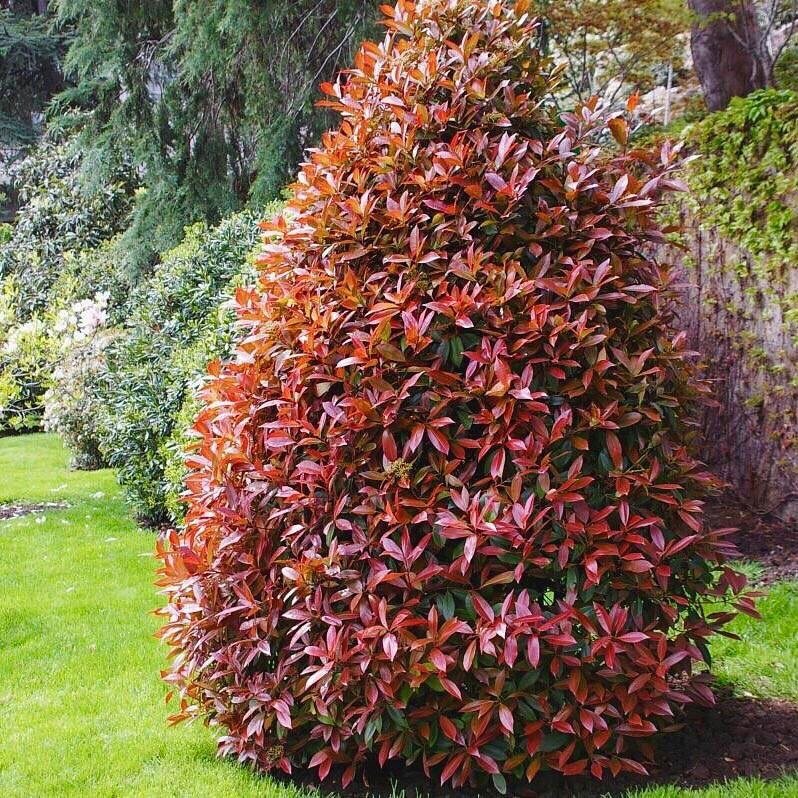
Here is a chart with detailed information on Photinia:
| Category | Information |
|---|---|
| Botanical Name | Photinia spp. |
| Common Name | Photinia, Red Tip Photinia |
| Plant Type | Evergreen Shrub or Small Tree |
| Hardiness Zone | 7-9 |
| Sun Exposure | Full Sun to Partial Shade |
| Soil Type | Well-drained, Moist Soil |
| Watering | Regular, Tolerant of Drought Once Established |
| Growth Habit | Upright, Dense, Rounded |
| Height/Spread | 6-15 feet tall / 4-10 feet wide (Varies by Species) |
| Flowering Time | Spring |
| Flower Description | Small, White Clusters of Flowers |
| Foliage | Glossy, Dark Green Leaves, New Growth Often Red or Bronze |
| Special Features | Evergreen Foliage, Attractive New Growth Color, Used for Hedges, Screens, and Specimen Plants, Low Maintenance |
- New growth is often bright red
- Good for hedges or specimen plants
- Varieties: ‘Red Robin’, ‘Little Red Robin’
14. Mahonia
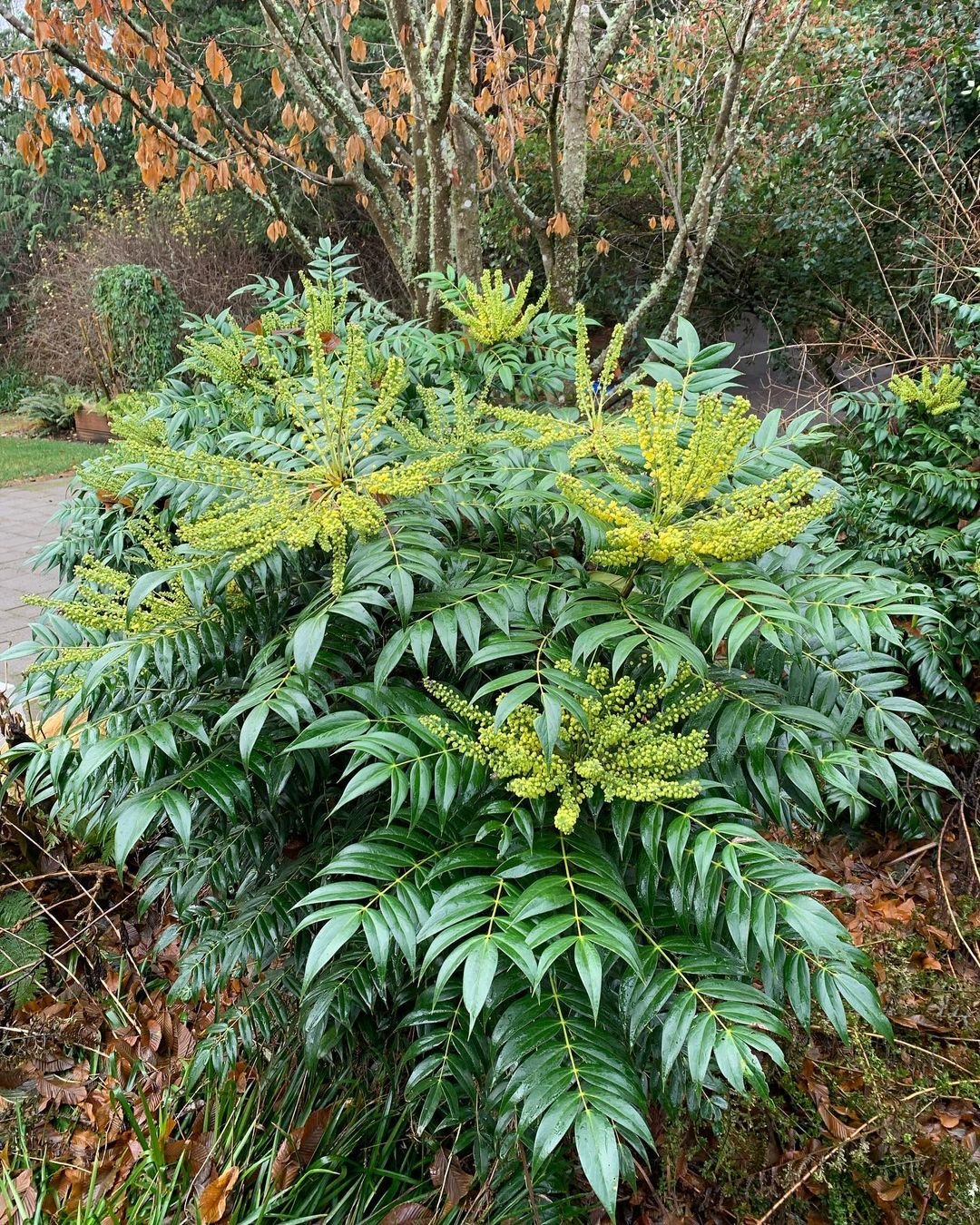
Here is a chart with detailed information on Mahonia:
| Category | Information |
|---|---|
| Botanical Name | Mahonia spp. |
| Common Name | Mahonia, Oregon Grape |
| Plant Type | Evergreen Shrub |
| Hardiness Zone | 5-9 |
| Sun Exposure | Full Sun to Shade |
| Soil Type | Well-drained, Moist, Acidic Soil |
| Watering | Regular, Tolerates Drought Once Established |
| Growth Habit | Upright, Bushy, Spreading |
| Height/Spread | 3-10 feet tall / 3-8 feet wide (Varies by Species) |
| Flowering Time | Winter to Spring |
| Flower Description | Small, Yellow Clusters of Flowers |
| Foliage | Glossy, Dark Green, Pinnate Leaves, Some with Blue or Purple Tint |
| Special Features | Evergreen Foliage, Attractive Winter Flowers, Edible Berries, Deer Resistant, Low Maintenance |
- Unique, spiky foliage
- Yellow flowers in winter
- Varieties: ‘Winter Sun’, ‘Soft Caress’
15. Aucuba
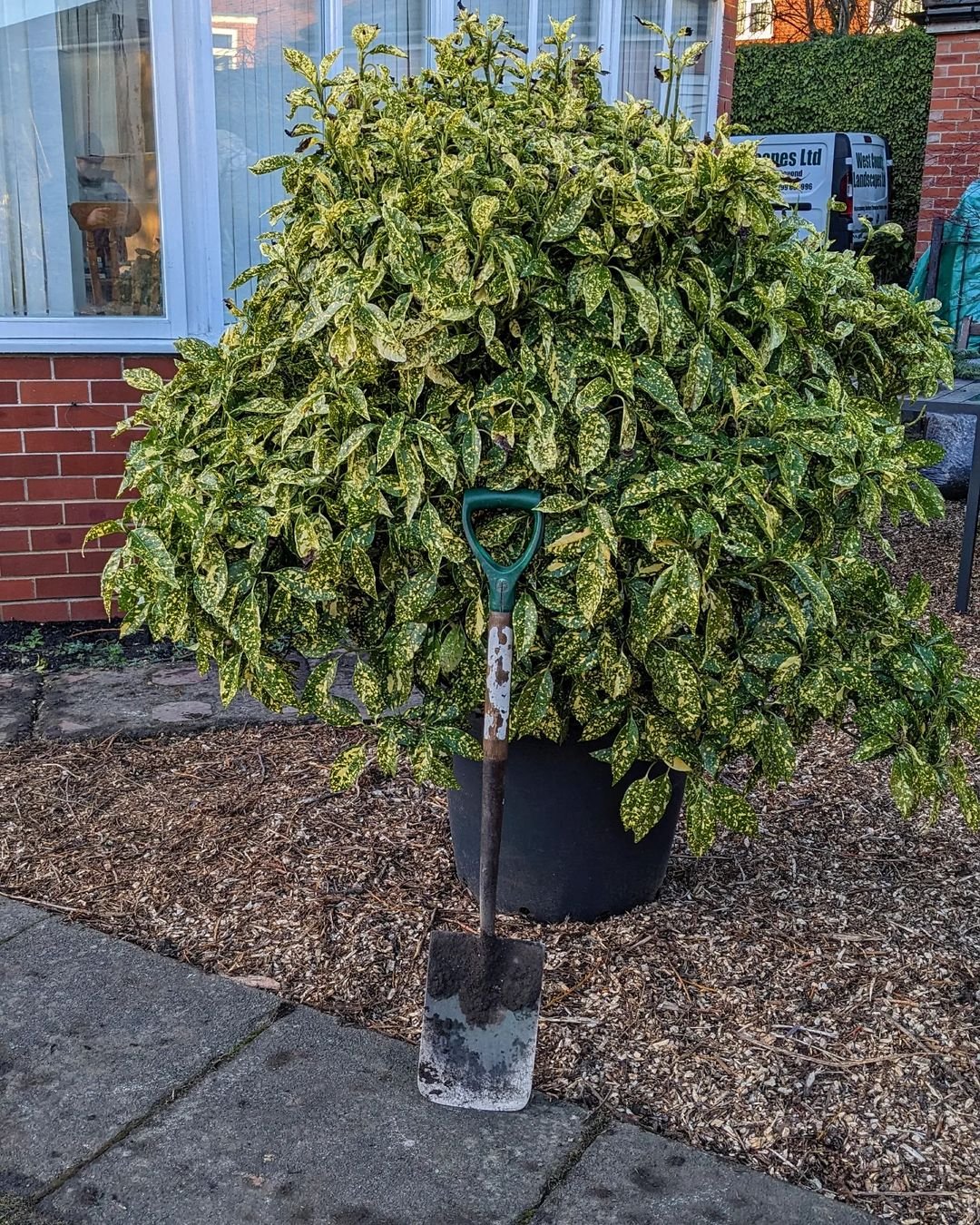
Here is a chart with detailed information on Aucuba:
| Category | Information |
|---|---|
| Botanical Name | Aucuba spp. |
| Common Name | Aucuba, Gold Dust Plant |
| Plant Type | Evergreen Shrub |
| Hardiness Zone | 6-10 |
| Sun Exposure | Full Shade to Partial Shade |
| Soil Type | Well-drained, Moist, Acidic to Neutral Soil |
| Watering | Regular, Tolerates Drought Once Established |
| Growth Habit | Dense, Rounded, Bushy |
| Height/Spread | 3-10 feet tall / 3-6 feet wide (Varies by Species) |
| Flowering Time | Spring (Less Showy) |
| Flower Description | Small, Inconspicuous, Red or Purple Flowers |
| Foliage | Glossy, Dark Green, Variegated with Gold or Yellow Spots |
| Special Features | Evergreen Foliage, Low Maintenance, Tolerates Shade, Used for Hedges and Foundation Plantings |
- Tolerates deep shade
- Variegated varieties brighten shady areas
- Varieties: ‘Gold Dust’, ‘Picturata’
16. Skimmia
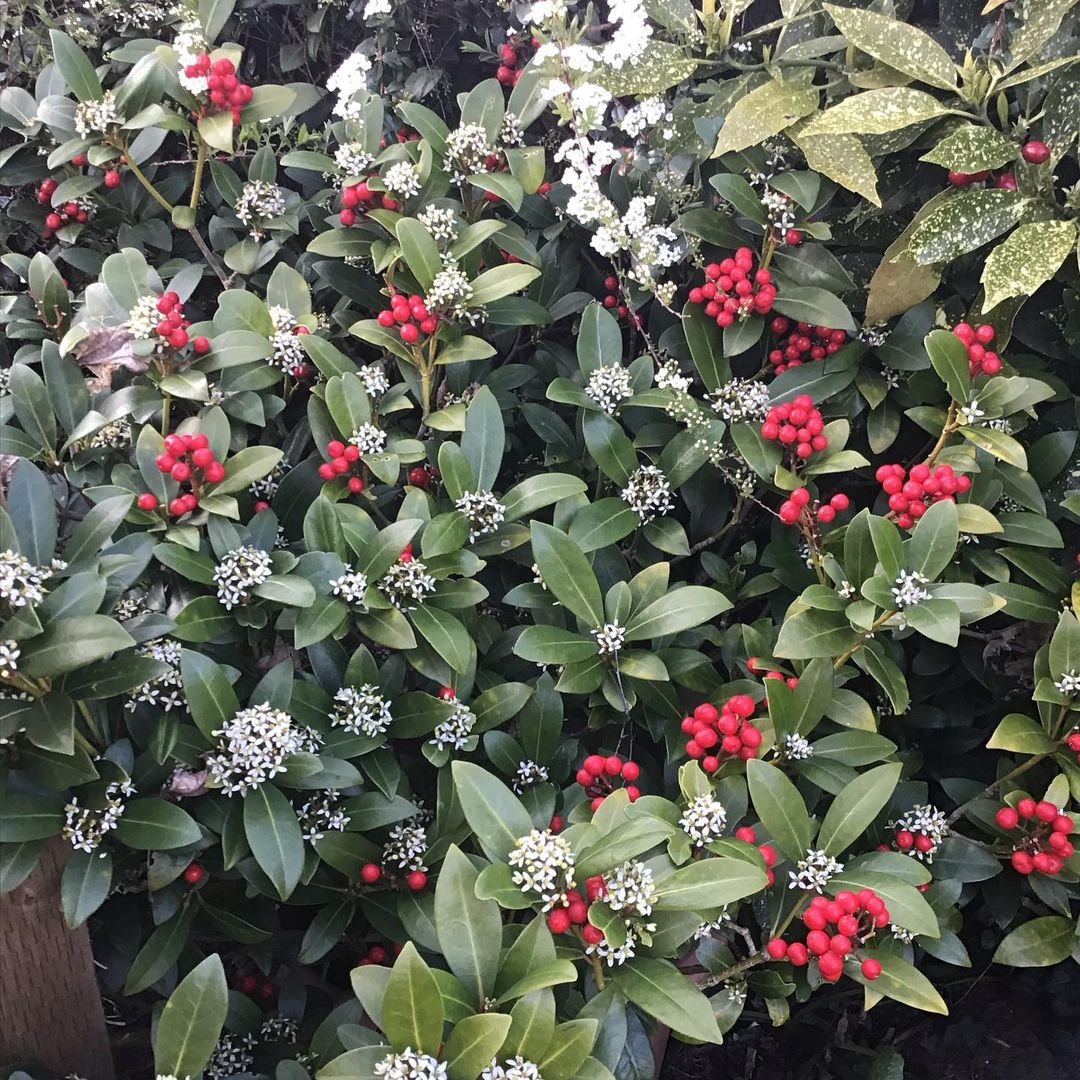
Here is a chart with detailed information on Skimmia:
| Category | Information |
|---|---|
| Botanical Name | Skimmia spp. |
| Common Name | Skimmia |
| Plant Type | Evergreen Shrub |
| Hardiness Zone | 6-8 |
| Sun Exposure | Partial Shade to Full Shade |
| Soil Type | Well-drained, Acidic, Moist Soil |
| Watering | Regular, Prefers Consistent Moisture |
| Growth Habit | Dense, Compact, Rounded |
| Height/Spread | 3-6 feet tall / 3-6 feet wide (Varies by Species) |
| Flowering Time | Late Winter to Spring |
| Flower Description | Small, Fragrant Clusters of White or Pink Flowers |
| Foliage | Glossy, Dark Green, Oval Leaves |
| Special Features | Evergreen Foliage, Fragrant Flowers, Attractive Berries, Ideal for Shade Gardens, Used for Borders and Containers |
- Compact shrub with aromatic leaves
- Red berries on female plants
- Varieties: ‘Rubella’, ‘Kew Green’
17. Leucothoe
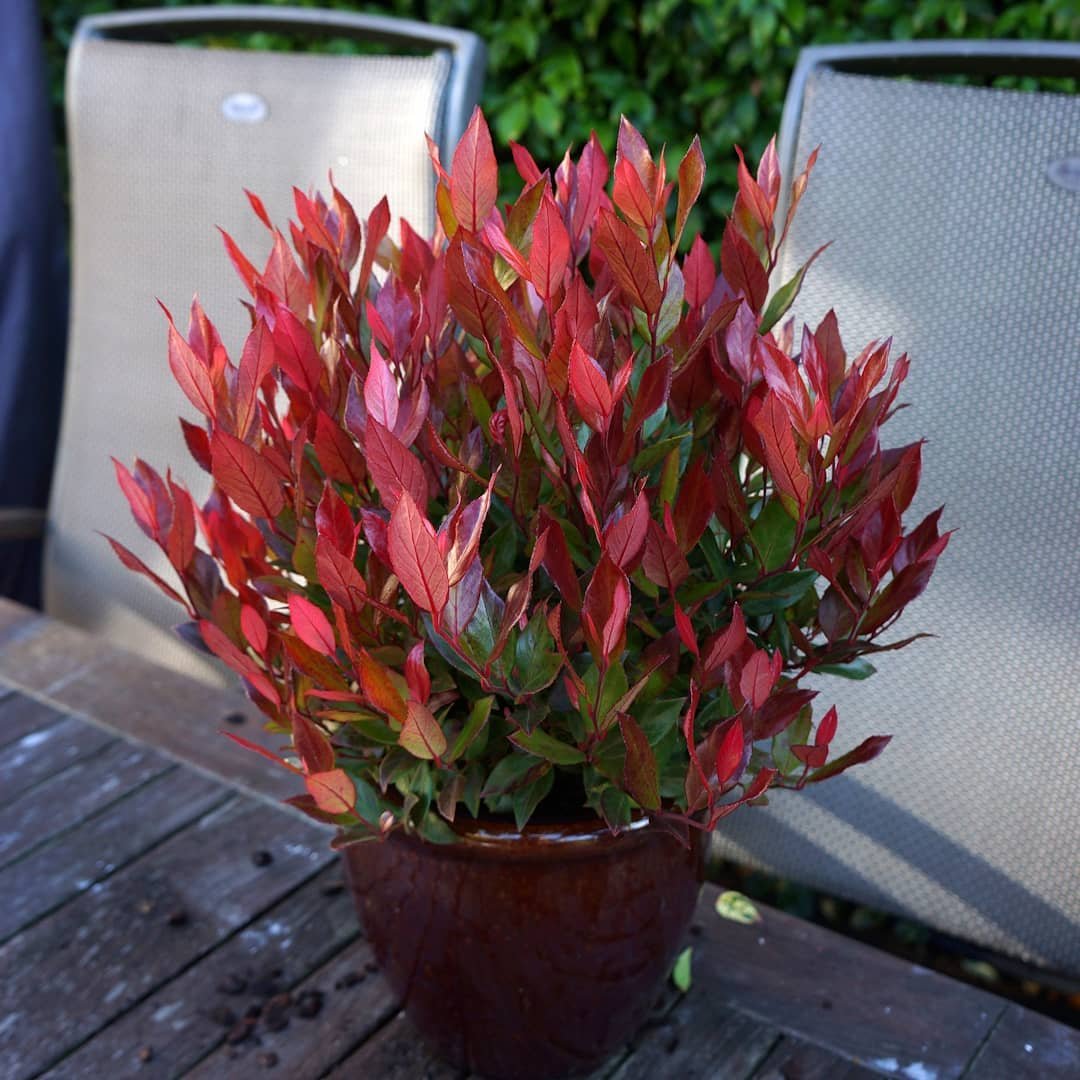
Here is a chart with detailed information on Leucothoe:
| Category | Information |
|---|---|
| Botanical Name | Leucothoe spp. |
| Common Name | Leucothoe, Drooping Leucothoe |
| Plant Type | Evergreen or Deciduous Shrub |
| Hardiness Zone | 5-9 |
| Sun Exposure | Partial Shade to Full Shade |
| Soil Type | Well-drained, Acidic, Moist Soil |
| Watering | Regular, Prefers Consistent Moisture |
| Growth Habit | Spreading, Arching, Rounded |
| Height/Spread | 3-5 feet tall / 3-6 feet wide (Varies by Species) |
| Flowering Time | Spring |
| Flower Description | Small, Inconspicuous, White or Cream Flowers |
| Foliage | Glossy, Dark Green, Sometimes Turns Red or Purple in Winter |
| Special Features | Evergreen or Attractive Deciduous Foliage, Arching Growth Habit, Ideal for Shade Gardens, Used for Groundcovers and Borders |
- Arching branches with glossy leaves
- Fall and winter color changes
- Varieties: ‘Rainbow’, ‘Scarletta’
18. Osmanthus
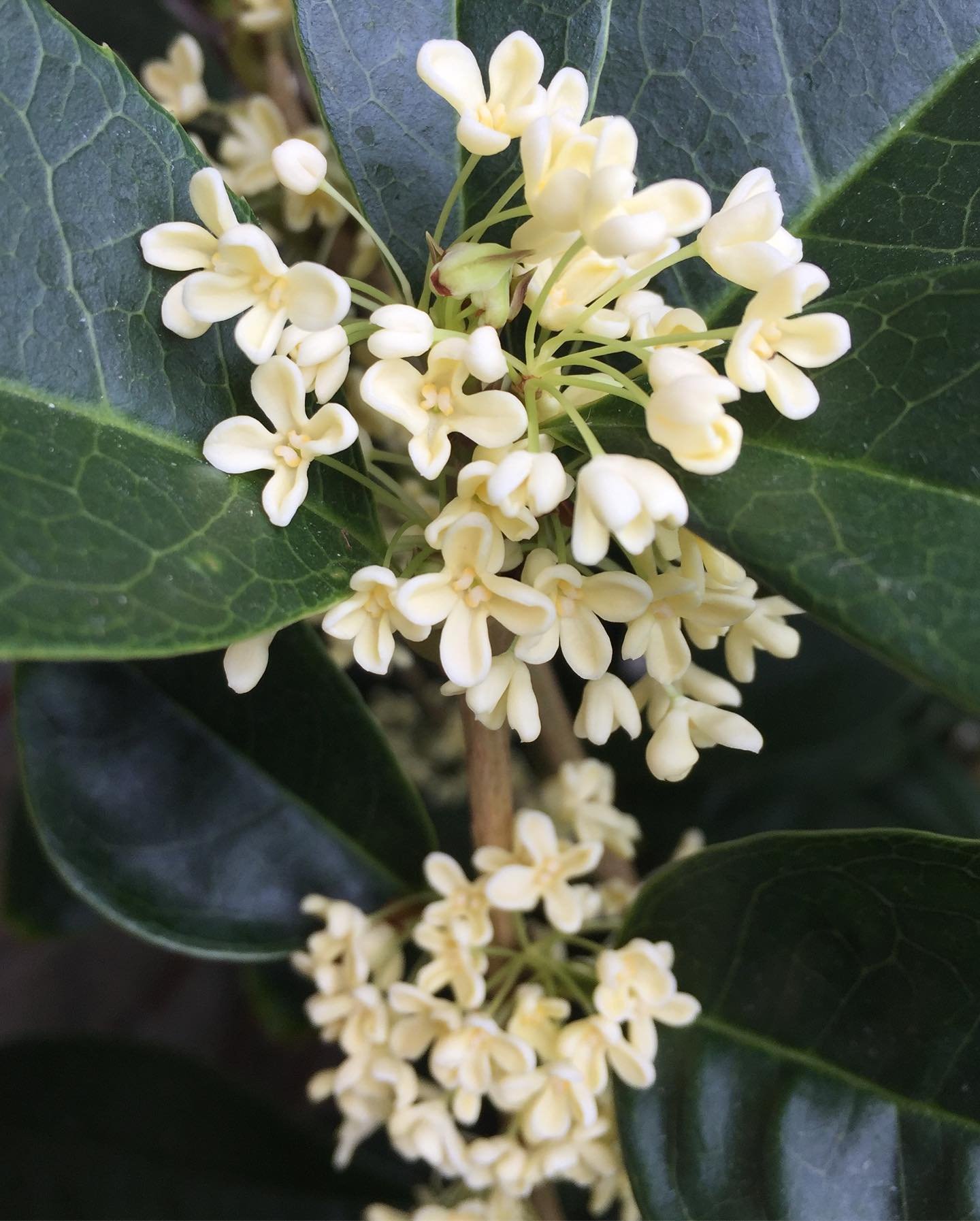
Here is a chart with detailed information on Osmanthus:
| Category | Information |
|---|---|
| Botanical Name | Osmanthus spp. |
| Common Name | Osmanthus, Tea Olive |
| Plant Type | Evergreen Shrub or Small Tree |
| Hardiness Zone | 7-10 |
| Sun Exposure | Full Sun to Partial Shade |
| Soil Type | Well-drained, Moist, Acidic to Neutral Soil |
| Watering | Regular, Tolerates Drought Once Established |
| Growth Habit | Dense, Rounded, Bushy |
| Height/Spread | 6-15 feet tall / 4-8 feet wide (Varies by Species) |
| Flowering Time | Fall to Winter |
| Flower Description | Small, Fragrant, White or Cream Flowers |
| Foliage | Glossy, Dark Green Leaves |
| Special Features | Fragrant Flowers, Evergreen Foliage, Low Maintenance, Used for Hedges, Screens, and Specimen Plants |
- Highly fragrant flowers
- Good for hedges or screens
- Varieties: ‘Goshiki’, ‘Gulftide’
19. Nandina
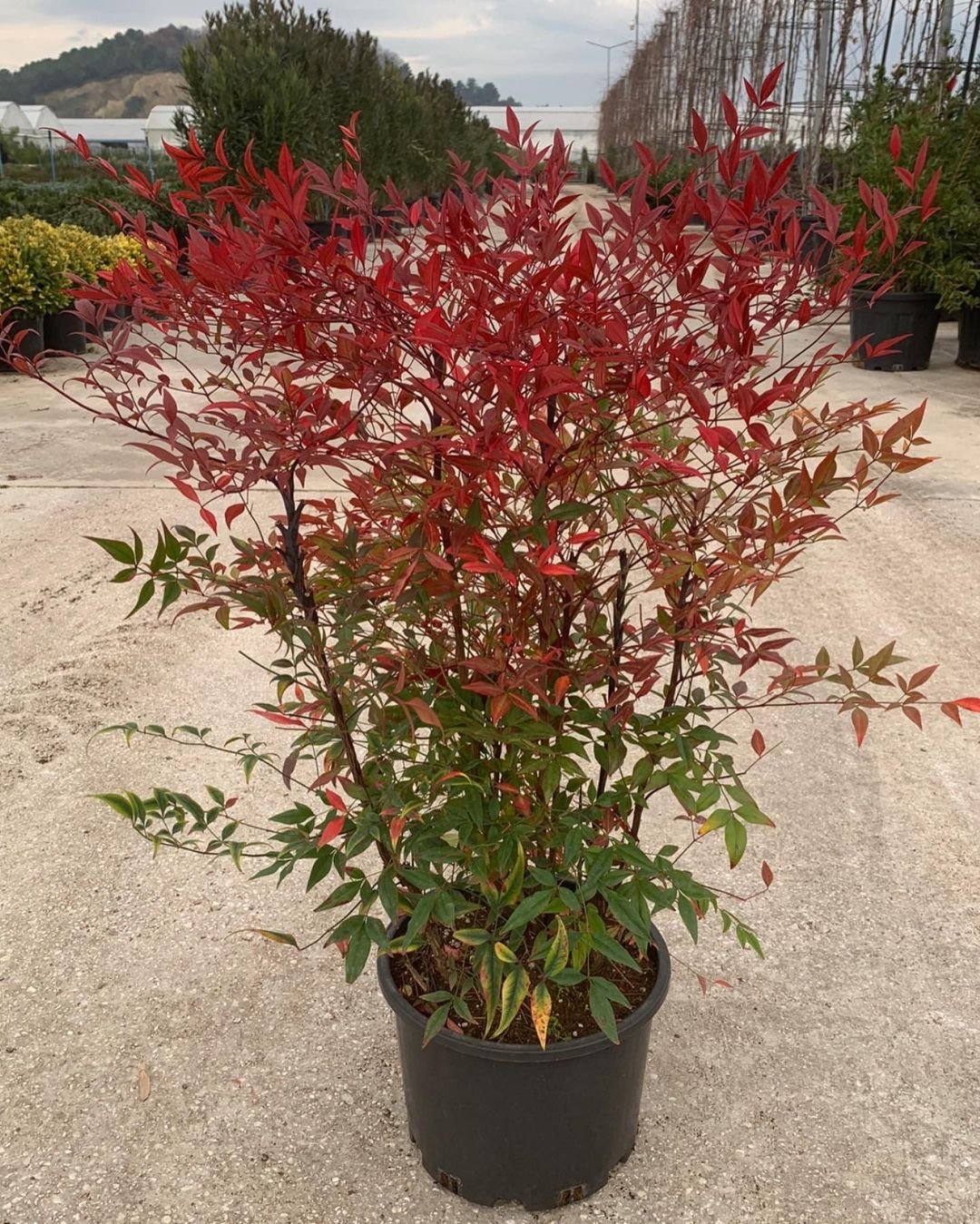
Here is a chart with detailed information on Nandina:
| Category | Information |
|---|---|
| Botanical Name | Nandina domestica |
| Common Name | Nandina, Heavenly Bamboo |
| Plant Type | Evergreen Shrub |
| Hardiness Zone | 6-9 |
| Sun Exposure | Full Sun to Partial Shade |
| Soil Type | Well-drained, Moist, Acidic to Neutral Soil |
| Watering | Regular, Tolerates Drought Once Established |
| Growth Habit | Upright, Dense, Shrubby |
| Height/Spread | 3-8 feet tall / 3-6 feet wide (Varies by Species) |
| Flowering Time | Spring |
| Flower Description | Small, White or Cream Flowers in Loose Clusters |
| Foliage | Glossy, Green, Turns Red or Purple in Fall and Winter |
| Special Features | Evergreen Foliage, Attractive Fall Color, Edible Berries, Low Maintenance, Used for Hedges, Borders, and Foundation Plantings |
- Also known as Heavenly Bamboo
- Red foliage in winter
- Varieties: ‘Fire Power’, ‘Gulf Stream’
20. Pittosporum
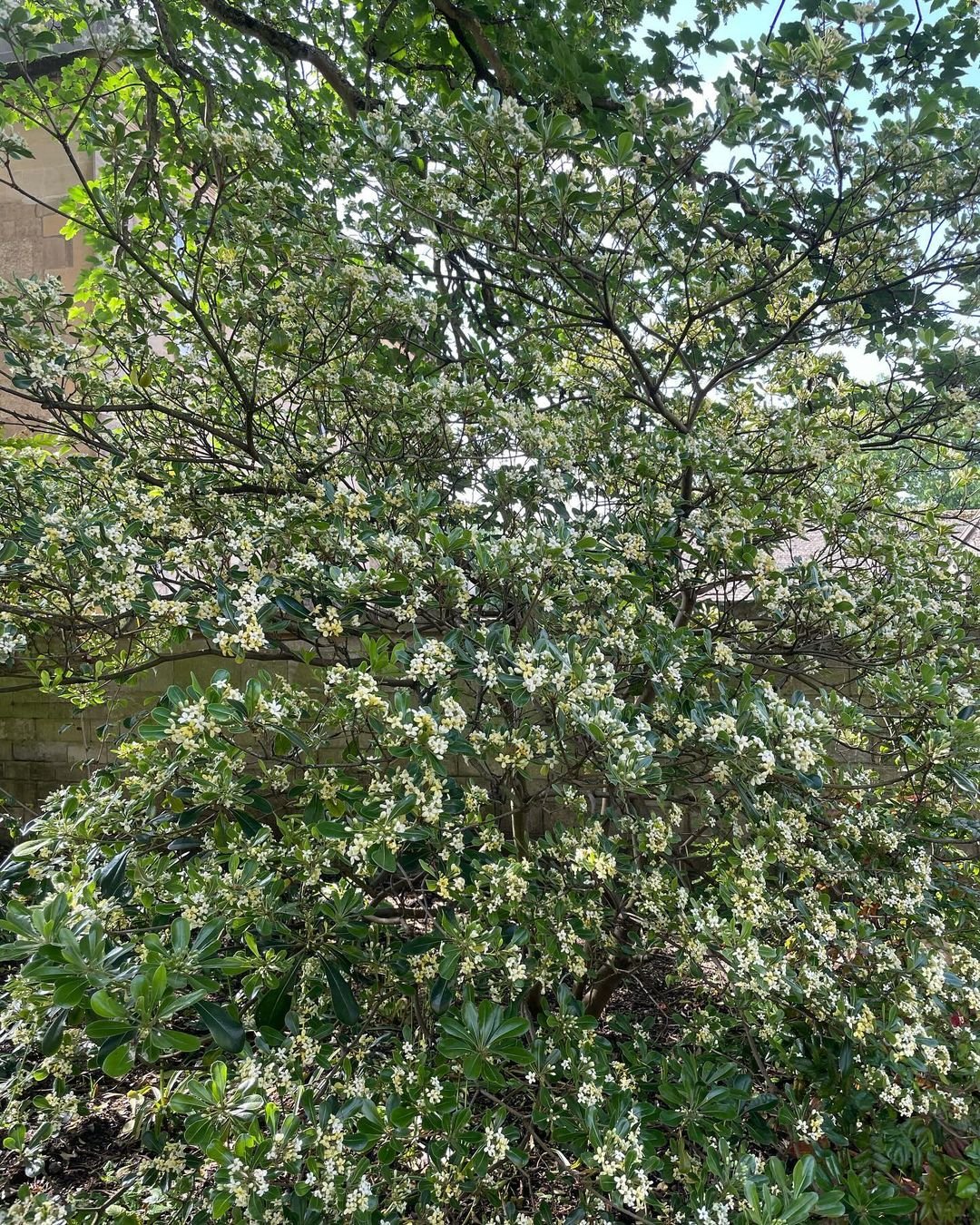
Here is a chart with detailed information on Pittosporum:
| Category | Information |
|---|---|
| Botanical Name | Pittosporum spp. |
| Common Name | Pittosporum, Pittosporum Tree |
| Plant Type | Evergreen Shrub or Small Tree |
| Hardiness Zone | 8-11 |
| Sun Exposure | Full Sun to Partial Shade |
| Soil Type | Well-drained, Moist, Acidic to Neutral Soil |
| Watering | Regular, Tolerates Drought Once Established |
| Growth Habit | Dense, Rounded, Bushy or Upright |
| Height/Spread | 4-12 feet tall / 4-6 feet wide (Varies by Species) |
| Flowering Time | Spring to Summer |
| Flower Description | Small, Fragrant, White or Cream Flowers |
| Foliage | Glossy, Green, Sometimes Variegated with Cream or Yellow |
| Special Features | Evergreen Foliage, Fragrant Flowers, Attractive Appearance, Used for Hedges, Screens, and Specimen Plants |
- Dense foliage ideal for hedges
- Some varieties have fragrant flowers
- Varieties: ‘Wheeler’s Dwarf’, ‘Golf Ball’
Planting and Care Tips
To ensure your evergreen shrubs thrive, follow these general guidelines:
- Soil Preparation: Most evergreens prefer well-draining, slightly acidic soil. Amend your soil if necessary.
- Planting: The best time to plant is in spring or fall. Dig a hole twice as wide as the root ball but no deeper.
- Watering: Water deeply and regularly during the first growing season to establish a strong root system.
- Mulching: Apply a 2-3 inch layer of mulch around the base of the shrub, keeping it away from the stem.
- Fertilizing: Use a balanced, slow-release fertilizer in early spring.
- Pruning: Most evergreens need minimal pruning. When necessary, prune after flowering or in late winter before new growth begins.
- Winter Protection: In colder regions, consider wrapping or using anti-desiccant sprays to protect from winter burn.
Choosing the Right Evergreen for Your Garden
When selecting evergreen shrubs, consider:
- Your USDA Hardiness Zone
- Available sunlight in your garden
- Soil type and pH
- Mature size of the shrub
- Growth rate
- Desired function (hedge, specimen plant, etc.)
Evergreen shrubs are invaluable additions to any garden, offering year-round interest and structure. With proper selection and care, these 20 varieties can transform your outdoor space into a lush, vibrant oasis that looks great in every season. Whether you’re looking for privacy, color, or low-maintenance options, there’s an evergreen shrub perfect for your needs. Happy gardening!
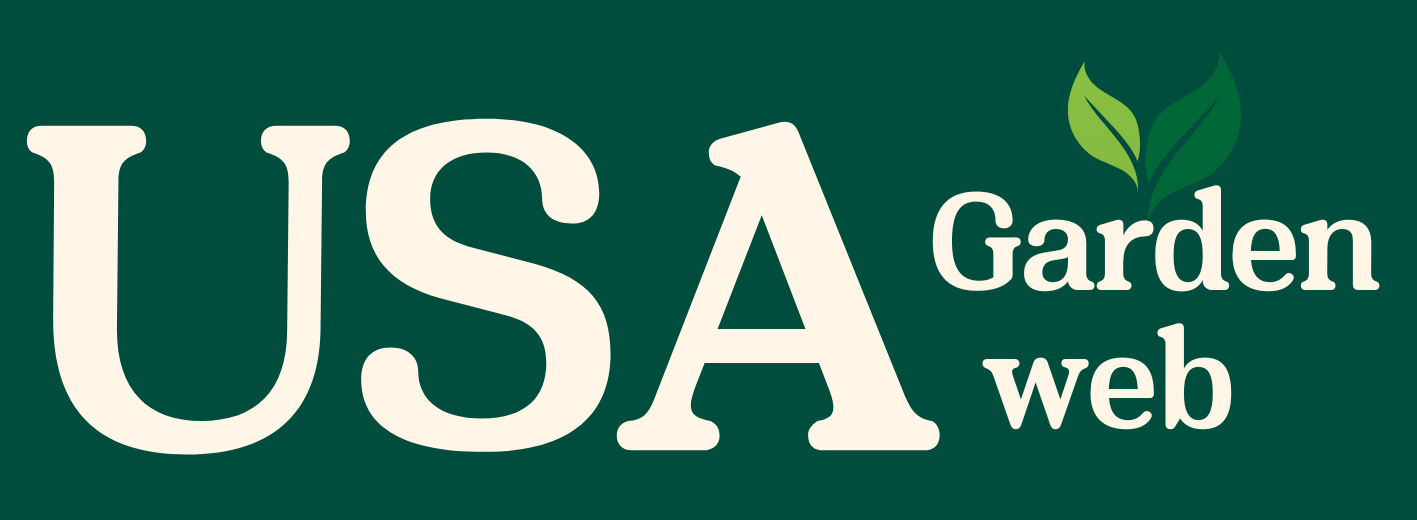

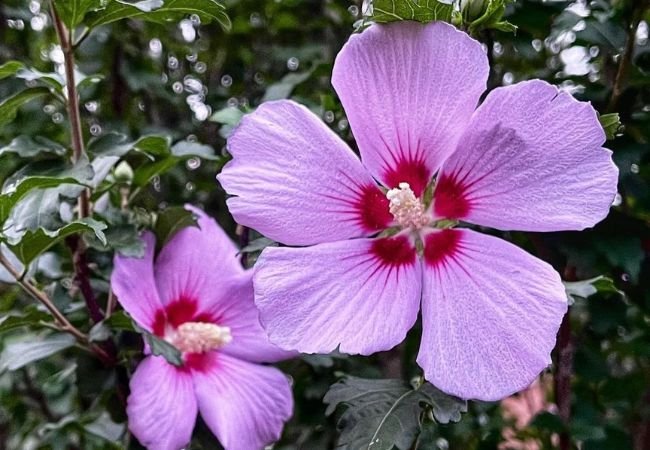
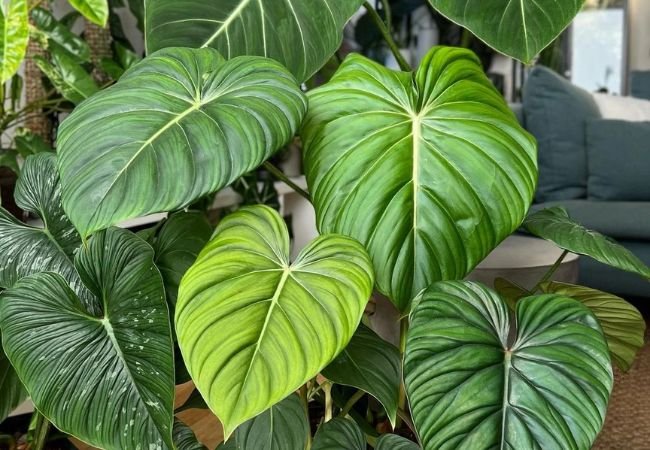
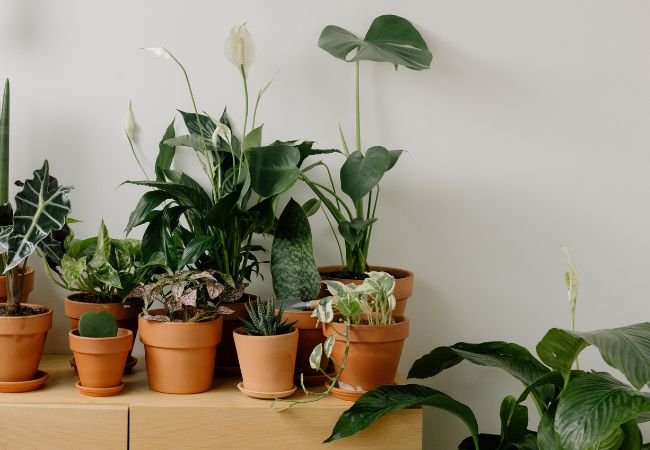
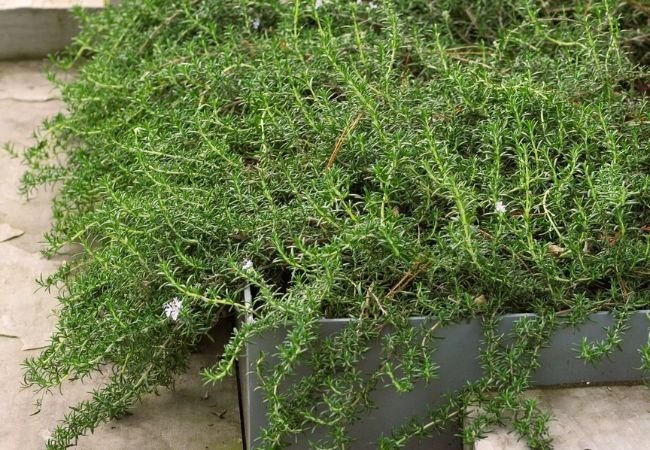
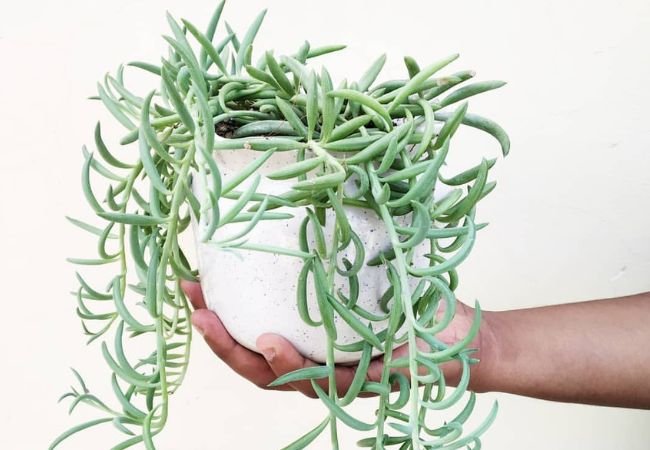
One Comment